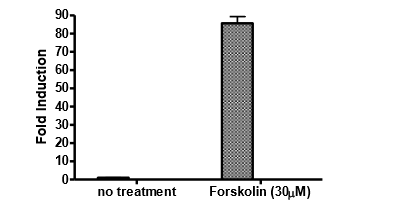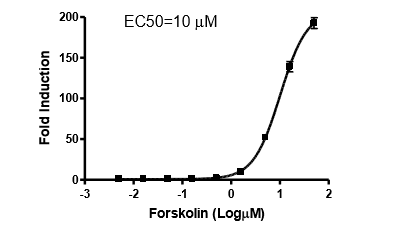CRE/CREB Luciferase Reporter Lentivirus
The main role of the cAMP response element, or CRE, is mediating the effects of Protein Kinase A (PKA) by way of transcription. Upon phosphorylation, CREB forms a functionally active dimer that binds the CRE element within the promoters of target genes and activates transcription. CRE is at the focus of many extracellular and intracellular signaling pathways, including cAMP, calcium, GPCR (G-protein coupled receptors) and neurotrophins. The cAMP/PKA signaling pathway is critical to numerous life processes in living organisms.
The CRE/CREB Luciferase Reporter Lentivirus are replication incompetent, HIV-based, VSV-G pseudotyped lentiviral particles that are ready to be transduced into almost all types of mammalian cells, including primary and non-dividing cells. The particles contain a firefly luciferase gene driven by multimerized cAMP response element (CRE) located upstream of the minimal TATA promoter (Figure 1). After transduction, activation of the cAMP/PKA signaling pathway in the target cells can be monitored by measuring the luciferase activity.

Figure 1. Schematic of the lenti-vector used to generate the CRE/CREB luciferase reporter lentivirus
1. Pessara, U., Koch, N. (1990) Tumor necrosis factor alpha regulates expression of the major histocompatibility complex class II-associated invariant chain by binding of an NF-κB-like factor to a promoter element. Mol Cell Biol. 10(8):4146-4154.
2. Baeuerle, P.A. (1998) Pro-inflammatory signaling: last pieces in the NF-κB puzzle? Curr Biol. 8(1):R19-R22.



